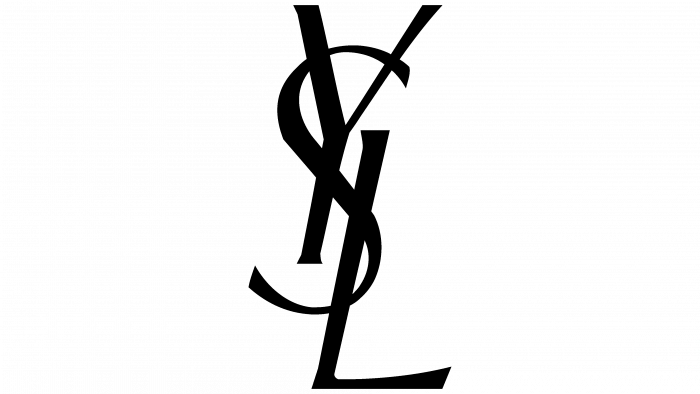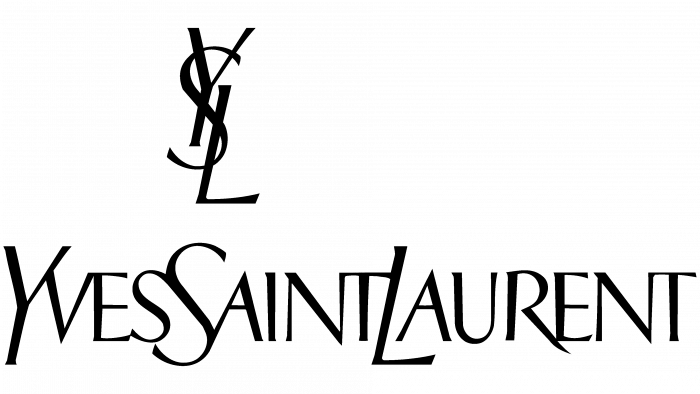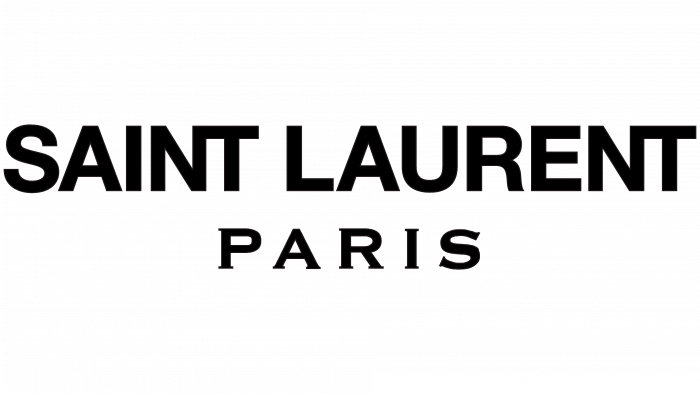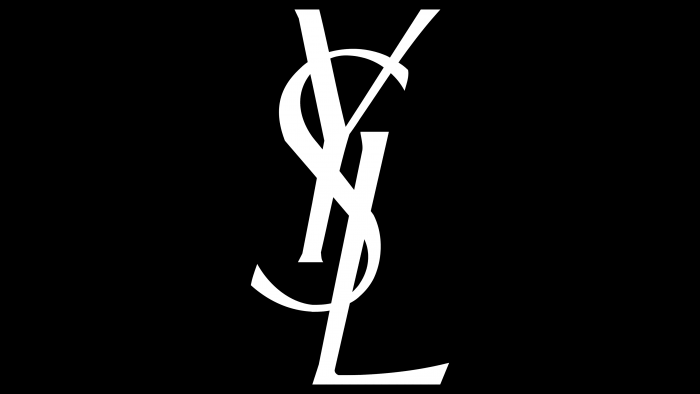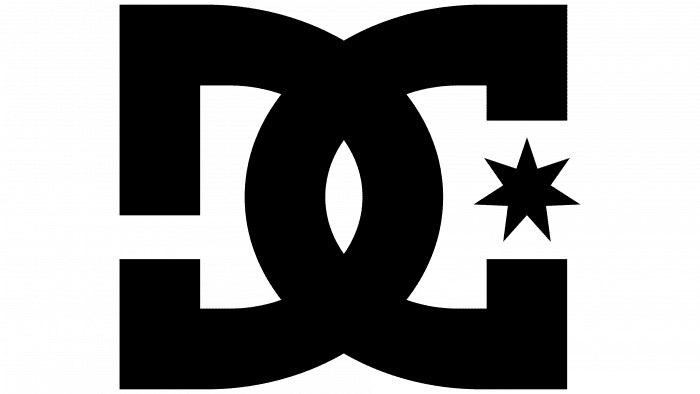Only from the combination of all the elements of the toilet, a real stylish image is formed, the YSL logo claims. The emblem conveys the fashion house’s ability to create and combine models. The symbols are full of grace and grace.
YSL: Brand overview
| Founded: | 1962 |
| Founder: | Yves Saint Laurent, Pierre Bergé |
| Headquarters: | Paris, France |
| Website: | ysl.com |
Meaning and History
Before starting his own fashion house, Yves Saint Laurent was deeply depressed. A year earlier, he was fired from Dior, where he worked as a chief designer for several months and then drafted into the army. Ultimately, he was released from military service, deemed unfit due to a nervous breakdown.
All this time, Pierre Berge was looking for investors to found a company. So in 1961, the iconic fashion house YSL appeared. While Saint Laurent was undergoing treatment, Berge made lucrative agreements and built the business from scratch. The first products to generate income were perfumes. Later, the assortment was supplemented by jewelry, footwear, clothing, accessories, and other luxury fashion goods.
But the success was short-lived: in the late 1980s, one of the investors suffered losses and could not finance the fashion house. Therefore, Berge and Saint Laurent were forced to sell their developing project to the French pharmaceutical company Elf Sanofi Beaute, which in 1999 came into the possession of Gucci, along with most of the assets.
Saint Laurent continued to create, leading the haute couture direction. Freedom of expression came to an end when Gucci executives decided to completely reimagine the brand. In protest, Pierre Berge, together with the eminent designer, tried to create a new business. They opened a high fashion boutique, for which they borrowed money that they could not return. Completely disenchanted with the era of Nike sneakers and monotonous jeans, Saint Laurent gave up the work of his life. Berge resigned as CEO of YSL, and the company itself remained the property of Gucci.
In 2012, a scandalous rebranding was carried out. This happened after Hedi Slimane took over as creative director. The new leader removed the Yves name from the fashion house’s name and abandoned the iconic logo, developed in 1962. He followed the path of simplification, for which fans of the iconic brand criticized him.
1962 – 2012
YSL got its first logo about a year after starting the business. Its author was the designer Adolphe Jean-Marie Mouron, better known as Adolphe Mouron Cassandre. He was born in Ukraine, then moved to France and received an education in arts. The YSL trademark was one of the last works of Cassandre before he took his own life due to depression.
The artist’s work was influenced by Cubism and Surrealism, which may have affected the results of his future activities. Therefore, the Yves Saint Laurent logo looked extremely unusual. The main symbol was a vertical monogram of stylized letters “Y,” “S,” and “L.” They are exquisitely intertwined with each other, expressing sensuality and craving for experimentation. In the center was “S,” which was used as a kind of “frame” for “Y” (top) and “L” (bottom). All three letters had short, sharp serifs and lines of varying thickness. This created an interesting contrast, transforming a still drawing into a dynamic image.
Below is the full name of the fashion house. Adolphe Mouron showed amazing creativity because he was able to combine the incompatible. There was an unwritten rule in the world of type designers: do not mix radically different letterforms. But this did not stop the Frenchman, and he successfully bypassed all the restrictions, developing an inscription from an impossible combination of symbols.
The YSL logo combined cursive and Latin styles, sans serif and serif. All characters were in uppercase, but the first “Y,” “S,” and “L” stood out noticeably in size. Such a difference in the size of the letters was needed to divide the text into three words, between which there were no spaces. In addition, the “Y,” “S,” and “L” were oblique, making the lettering seem to flow from left to right.
2012 – today
In 2012, the new creative director, Hedi Slimane, decided to break the course of history and change the brand’s visual identity. On his part, it was not a creative experiment but a rejection of the original style in favor of minimalism. The word “Yves” disappeared from the logo and the official name of Saint Laurent, which became the reason for high-profile scandals and even for the termination of some contracts.
Hedi Slimane also removed the famous monogram and moved its headquarters from Paris to Los Angeles. He managed to do all this before he presented his first collection. Despite the publicity, Pierre Berge approved the changes. It was important to him that Slimane would return to the origins of YSL’s fashion style.
Nothing remains of the original Cassandre design in the new logo. The modern version of the inscription is based on the sign of the Saint Laurent Rive Gauche brand boutique – laconic, simple, and very restrained. A bold grotesque was chosen for the name of the company. There is some serif only in the lower right corner of the “R.” The letters “NT” merge, connecting at one point. And under the phrase, “SAINT LAURENT” is the word “PARIS” – a tribute to the city where the fashion house was founded. His font belongs to the class of antiquity.
YSL: Interesting Facts
Yves Saint Laurent (YSL) is a monumental name in fashion, representing innovation, elegance, and a shift in clothing perception and wearability.
- Beginnings: At 17, Yves Saint Laurent moved to Paris to pursue fashion, soon joining Christian Dior. After Dior died in 1957, 21-year-old Laurent took over, making waves in fashion. In 1961, with Pierre Bergé, he established the Yves Saint Laurent fashion house.
- Women’s Tuxedo: In 1966, Laurent introduced “Le Smoking,” a tuxedo for women. This broke new ground in androgynous style and paved the way for gender fluidity in fashion. It remains a timeless piece, continuously reimagined by designers.
- Mondrian Collection: The 1965 Mondrian collection, inspired by Dutch artist Piet Mondrian, merged minimalist art with fashion, opening new avenues for creative expression between fine art and clothing design.
- Empowering Fashion: Laurent’s designs often mixed masculine and feminine elements, empowering women with an assertive yet elegant style and reflecting his vision of women’s evolving societal roles.
- First Ready-to-Wear Boutique: Opening Saint Laurent Rive Gauche in 1966, Laurent made high fashion more accessible, challenging the exclusivity of haute couture and democratizing fashion.
- Global Inspirations: Laurent’s designs drew from diverse cultures, incorporating Russian, African, and Spanish influences. This showcased his adaptability and pushed fashion towards a global dialogue.
- Muses: Loulou de la Falaise and Betty Catroux greatly influenced Laurent, embodying the YSL spirit in their style and personality and shaping the brand’s direction.
- Mental Health Battles: Despite his achievements, Laurent faced mental health challenges, including depression and substance abuse, highlighting the intense pressure of creative industries.
- Enduring Legacy: Yves Saint Laurent’s legacy transcends his creations, celebrated for revolutionizing fashion, challenging norms, and fostering discussions on gender and identity through clothing. Under various creative directors, the brand continues to innovate, staying true to Laurent’s vision.
YSL is a testament to Yves Saint Laurent’s genius, belief in fashion’s transformative power, and enduring influence on our dress and self-expression.
Font and Colors
When the YSL empire first developed, its distinctive symbol was a vertical monogram of three intertwined letters. It was accompanied by an inscription – deceptively simple and elegant. It looked extremely minimalistic and, at the same time, did not contain unnecessary strokes or strange ligatures because its author Cassandre thought through everything to the smallest detail. The artist arranged each letter with geometric precision to create a beautiful rhythm and convey the designer’s sensuality in the movement of the lines.
This is what has set Yves Saint Laurent apart from other luxury brands for decades. But the modern era has changed everything from clothing style to logo design. With the arrival of a new creative director, the company has lost part of its historical heritage. The logo has become much simpler, more compact, and has acquired “heavy” bold outlines. On the one hand, the changes improved the readability of the name; on the other hand, they deprived the fashion house of its authenticity. The retro symbol continues to be used for only a few cosmetic and perfume lines.
The first inscription was developed by the legendary Cassandre, who combined two typefaces in one line: italic and Roman. The letters had different line thicknesses and short serifs at the ends. In 2012, the phrase “SAINT LAURENT” began to be written in the Neue Helvetica font. The word “PARIS” appeared at the bottom, highlighted in bold serif – probably Copperplate Gothic Std Bold or its equivalent.
The most popular version of the logo is black and white. It is suitable for labeling any product and follows a minimalist style.
YSL color codes
| Black | Hex color: | #000000 |
|---|---|---|
| RGB: | 0 0 0 | |
| CMYK: | 0 0 0 100 | |
| Pantone: | PMS Process Black C |
